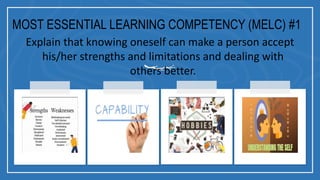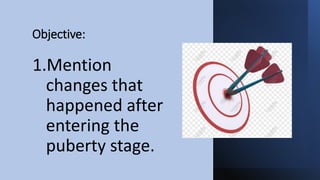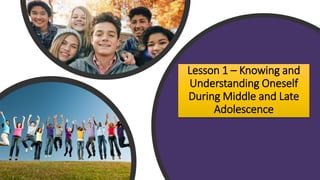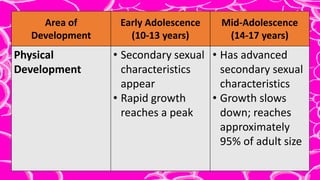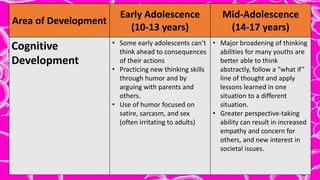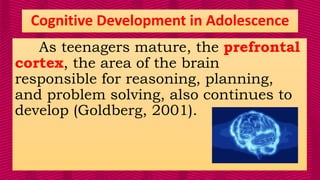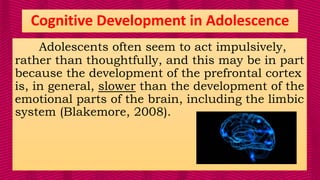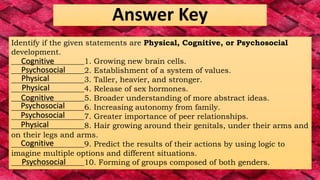The document discusses knowing oneself during adolescence. It explains that understanding one's strengths, weaknesses, abilities, and interests can help adolescents accept themselves and relate better to others. The document also outlines key physical, cognitive, and psychosocial changes that occur during early and mid-adolescence, such as sexual maturation, advanced reasoning skills, and stronger peer relationships.

